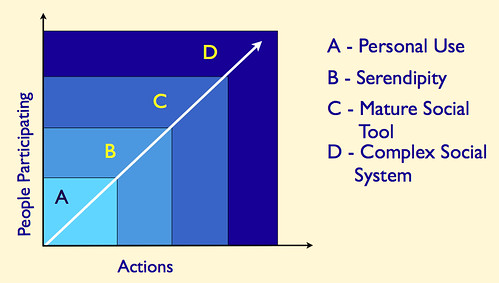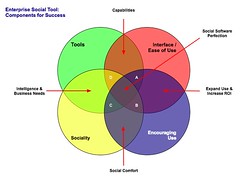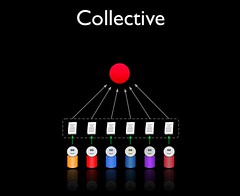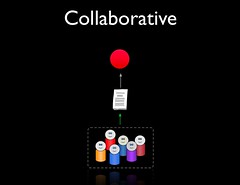The impending closing of Donna has bumped a couple of thoughts to blog to the front of the queue.
First off, Donna is an iOS calendaring app that focusses on one’s agenda for that day and upcoming days with a targetted focus on the transportation timing and how that impacts your day. If your life has children that need transporting between activities or work that is out and about bouncing to meetings or work sites Donna is utterly indespensable. Donna puts a focus on the getting between places, so calculates the travel time to let you know when you really should leave, as it monitors traffic and weather conditions. The app offers four different modes of transportation and the related times for those: Driving, public transit, biking, and walking.
One of the best parts of Donna, which many other applications also do, is it reads your native calendar on iOS and augments it. It isn’t a separate calendar to lose things in if you forget. Content you may modify to help plan in Donna, like search to find the exact location for a meeting, is added to the calendar object and can be used in other calendar apps. I will focus a bit more on this in the following section on “Small Apps Loosely Joined”.
Not only will Donna give you a warning when it is approching time to leave, but it can send those you are meeting with notification that you are on your way and / or you are running late. Donna also monitors the weather and can advise on transportation changes should you be walking or biking. One other really helpful element is having the option to use Uber, if you are in a city that has it (Donna knows) and the event is that day (this was incredibly helpful this week).
One of the wonderful things is the evening of the day prior Donna provides a notification of how many meetings you have the next day, but if you don’t have any in your calendar(s) it tells you to enjoy your day, which is a wonderful little touch.
Designing for Use
The thing that stands out with Donna is not just its really good interaction design and really well designed information structures for easy to scan appointments, but it is designed to solve a pain point. Most specifically it is designed for use. The design is focussed on solving a problem and to be an easy to use solution for that problem, which is: I have meetings and activities in my day that take me out and around and sorting out the timing so I can optimize my day for my interests (get more time by driving, more health and environmentally focusse using bike or walking, etc.). Letting others knwo when you are late or on your way is really helpful and directly tied to the mobility of getting to meetings and activities. Having an app that pulls all the needed information around that task set is fantastic.
Donna isn’t designed to be a full replacement for a calendar, but is there to augment it and the use needs around the activities of getting between places.
Donna also understands what is needed as well as not needed. Allowing for modifying settings for alerts and notifications is really helpful. Understanding when alarms are not going to be helpful, understanding helpful user preferences when you are running late (auto send notes, how far ahead, or not to send at all automatically). Donna was built with the idea of a really helpful human assistant who looks after your schedule and is a step ahead of you. This framing of use and a helpful model really shines through in the app.
Small Apps Loosely Joined
Donna and many other calendar apps that are on mobile devices are not aimed at fully augmenting your native calendar service, but to integrate and augment that service. The model that is increasingly familiar is along the idea of small apps loosely joined model. This model puts a focus on using standard data structures, common object types, and a central app or service as a hub to provide a foundation for other apps and services to use the core object and augment it, often with data that fits the model type, and exends use.
With Donna the object is a standard calendar entry that has day, time, timezone, location, who are meeting with, notes, etc. But, the app can improve the data in the object, such as location. But, most of the apps not only improve the information within itself, but improve the core data so all other apps that use that object as well. The apps are often offering agency to do a task, or set of tasks, around the object. Donna puts the use focus on the use needs for getting there and communicating with others around that activity.
With calendaring, many using Mac or iOS opt for Fantastical to imput new calendar items as its native language parsing into a calendar data structure is incredibly good. Some people really like the interface from Fantastical and use it to view their day and upcoming events. There are an incredible amount of viewing your calendar / schedule options out there. Another smart agent for the calendar is Tempo app, which works to aggregate everything around a calendar item and pull it into easy reach (very much in the Come to Me Web model). Tempo pulls all the contact information for all participants in a meeting, all related email, all related files, weather, etc. all within easy reach as part of its view of the calendar entry. Tempo is as indespensable as Donna is for me personally (and I heavily rely on Fantastical for easy input, on my mobile I talk the calendar entry info into Fantastical and let it do its thing).
Who is Living the Small Apps Loosely Joined Life?
So who is working this way? Not so surprisingly, if one has been paying attention to how people actually are using devices and services, the user survey’s the past year or so have been asking about using more than one app for task types (calendaring, notes, reminders, text, etc.) and finding that 60% to upper 70% of those surveyed are using multiple apps for task types. Those surveyed have often been well outside of the geek and nerd camps that have worked this way for years, but regular folks who are not deeply adept technically. The focus on apps that do a task or set of tasks insanely well and easily trump a large app that does many things somewhat well. That one size fits all and category winner thinking has been dead for quite a while and is far from helpful model for thinking about much of anything.
The last few years, either in conferasions or listening to them, with people talking about their apps and how they do things on the devices (often mobile and tablet) it is increasingly common to hear, “I use a few apps to do…” what follows is calendaring, text documents, notes, mapping, driving directions, reminders, etc. and two or more apps stated and the specific tasks and user flow they have for each app. These were often non-geeks, but having surveys targeted at mainstream users and their habits and use patterns really brought home how mainstream this actually is.
Good Bye Donna
As Harry McCracken pointed out in Yahoo to Donna Users: We’re Dispensing With Your Indispensable App Donna has become indispensable for me. The great folks at Incredible Labs (that includes bud Kevin Cheng) did a fantastic job with Donna. Keeping Donna going was likely going to be a struggle as the computing to suss out location and needs as well as the and licensing the transportation times they used was not going to live a long time as an ongoing free app. The competition with other apps starting to incorporate similar time for transit models (yet clearly not designed from a perspective of use, but as a feature to add) likely was going to make things tougher as well as Apple adding transporation times and notifications based on that in Mac’s Mavericks version (adding it to desktop OS and not the mobile OS really was an odd move that is very un-Apple as it was not designed from a use in mind perspective).
It has been a while that I have been worried about the long run for Donna. A chat with Kevin about running a start-up in this space somewhat gave legs to that concern. Many start-ups have an exit in mind from the start and with any luck and perseverence it is a positive exit (not just shutting it and going bankrupt). I am really happy for Kevin and the other Incredible Labs folks as they got a positive exit for them and I wish them well at Yahoo (for all that are making that transition). Incredible proved they could nail a service that is designed for use, which leads to it becoming a really valueable part of people’s lives. Thank your for bringing us Donna as an agent to greatly improve our lives.

![Reblog this post [with Zemanta]](http://img.zemanta.com/reblog_e.png?x-id=db7a8b23-e75c-4cf7-bc51-4a3302e7cf8b)


